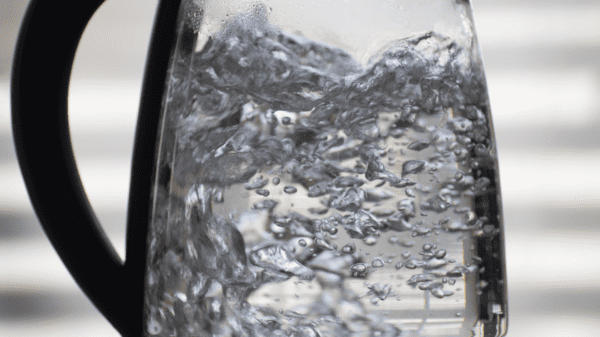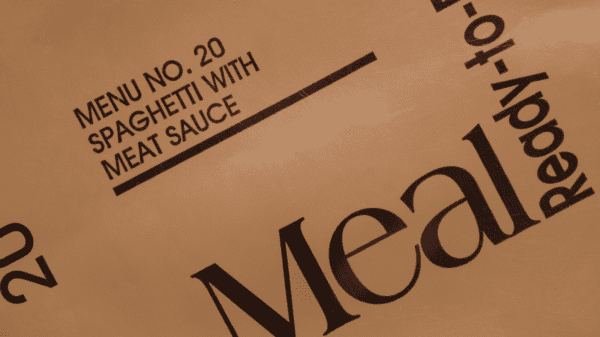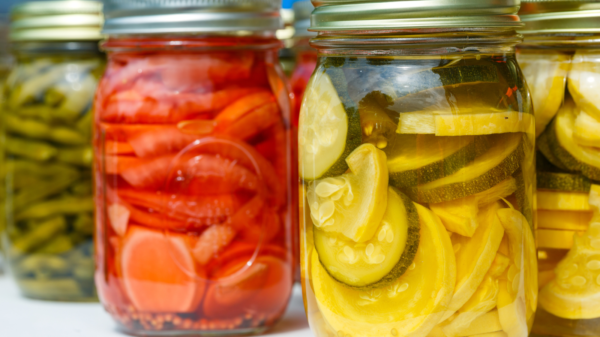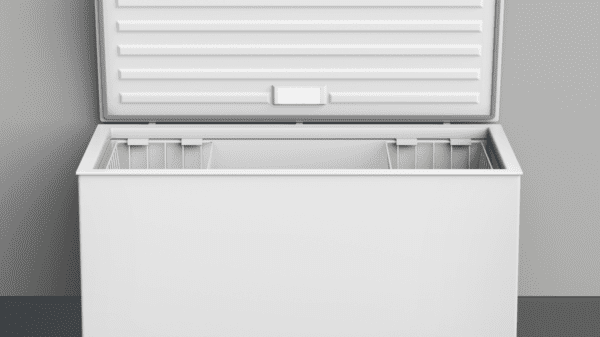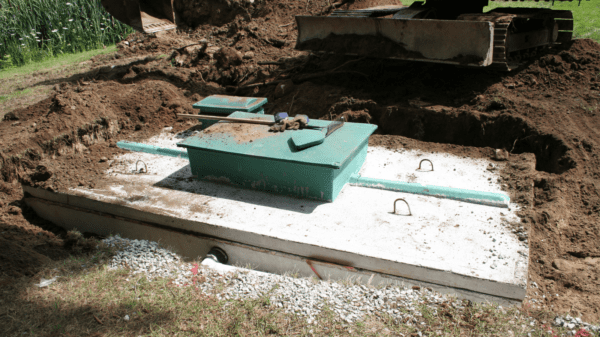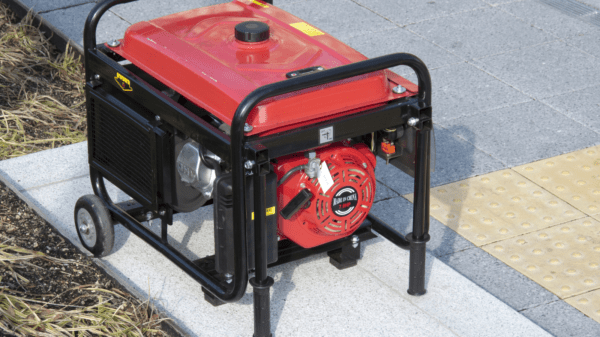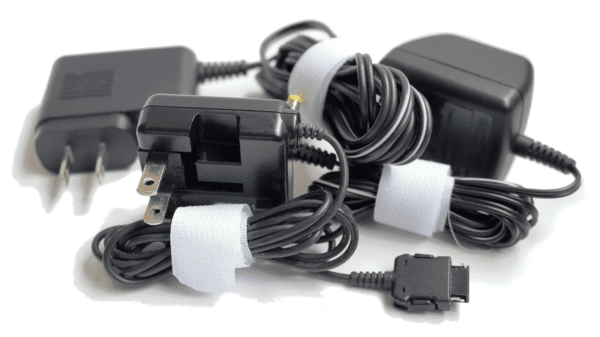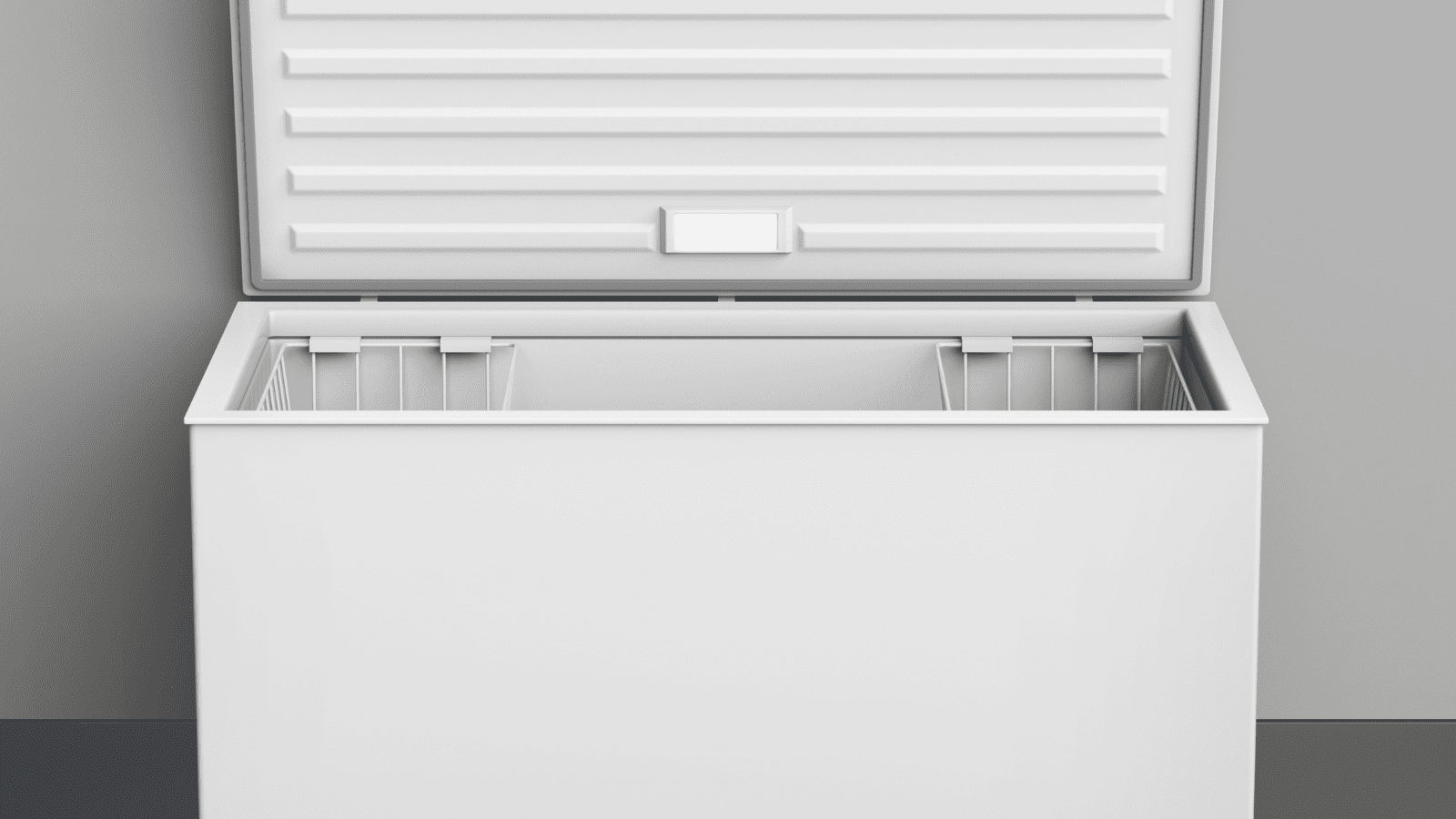A storage freezer is an essential appliance for any household, restaurant, or food business. It allows you to preserve food for longer periods, helping you save money and reduce waste. With various options available in the market, selecting the right storage freezer can be a daunting task. In this comprehensive guide, we will discuss all the crucial factors to consider when choosing a storage freezer, including price, capacity, energy use, and other essential features. We will also provide you with a list of valuable resources to help you make an informed decision.
Table of Contents
Types of Storage Freezers
There are four primary types of storage freezers: Upright Freezers, Chest Freezers, Drawer Freezers, and Portable Freezers. By understanding the advantages and disadvantages of each type of storage freezer, you can decide which one best fits your needs, preferences, and space constraints.
Table: Storage Freezer Types Advantages, Disadvantages, and Price Range
| Type of Freezer | Advantages | Disadvantages | Price Range | Energy Consumption (kWh/year) | Annual Energy Cost |
|---|---|---|---|---|---|
| Upright | Easy organization & accessibility, smaller footprint, adjustable shelves | Higher energy consumption, higher initial cost, less energy-efficient | $400 – $2,500 | 450 – 550 | $58.50 – $71.50 |
| Chest | Energy-efficient, lower initial cost, larger storage capacity | Requires more floor space, less convenient access, challenging organization | $200 – $1,500 | 350 | $45.50 |
| Drawer | Space-saving design, seamless integration with kitchen, easy access | Limited storage capacity, higher initial cost, less energy-efficient | $1,000 – $4,000 | 500 | $65.00 |
| Portable | Portable & lightweight, ideal for outdoor activities, versatile power options | Limited storage capacity, not as energy-efficient, not suitable for long-term storage | $100 – $1,000 | 250 (assuming light use) | $32.50 |
Each type has its advantages and disadvantages, which we will discuss in detail in this section.
Upright Freezers
Upright freezers resemble traditional refrigerators in terms of design, featuring a vertical orientation with shelves and compartments for organizing food. These freezers usually have a smaller footprint and provide easier access to the stored items.
Advantages:
- Easier organization and accessibility
- Smaller footprint, ideal for tight spaces
- More storage options with adjustable shelves and compartments
Disadvantages:
- Generally higher energy consumption compared to chest freezers
- Higher initial cost
- Less energy-efficient due to frequent door opening
Chest Freezers
Chest freezers have a horizontal orientation with a top-opening lid. They typically offer more storage space and better energy efficiency compared to upright freezers. However, they require more floor space and can make it harder to access and organize items.
Advantages:
- More energy-efficient
- Lower initial cost
- Larger storage capacity
Disadvantages:
- Requires more floor space
- Less convenient access to stored items
- Organization can be challenging
Drawer Freezers
Drawer freezers are built-in or under-counter freezers that feature multiple pull-out drawers for storing and organizing items. They are designed to blend seamlessly with your kitchen cabinetry and provide easy access to stored items.
Advantages:
- Space-saving design
- Seamless integration with kitchen cabinetry
- Easy access to stored items
Disadvantages:
- Limited storage capacity
- Higher initial cost
- Not as energy-efficient as chest freezers
Portable Freezers
Portable freezers are compact, lightweight, and designed for easy transportation. They are perfect for camping trips, picnics, or other outdoor activities where a reliable cooling solution is required.
Advantages:
- Portable and lightweight
- Ideal for outdoor activities and travel
- Can often be powered by car batteries or other portable power sources
Disadvantages:
- Limited storage capacity
- May not be as energy-efficient as stationary freezers
- Not suitable for long-term storage
Factors to Consider When Choosing a Storage Freezer
In this section, we will explore the essential factors to consider when choosing a storage freezer:
Table: Factors to Consider When Choosing a Storage Freezer
| Factor | Considerations |
|---|---|
| Price | Determine a budget, consider long-term energy savings |
| Capacity | Assess household size, food storage habits, available space |
| Energy Efficiency | Look for Energy Star ratings, compare energy consumption |
| Size & Space | Measure available space, consider door clearance and ventilation |
| Temperature Control | Seek models with digital temperature controls, minimal fluctuations |
| Defrosting Method | Choose between manual defrost and frost-free models |
| Noise Level | Check decibel rating and customer reviews for quiet options |
| Additional Features | Consider adjustable shelving, interior lighting, door locks, reversible doors, alarms, etc. |
Price
The price of a storage freezer can vary depending on its type, size, and features. Set a budget before you start shopping, and keep in mind that investing in an energy-efficient model may save you money in the long run through reduced energy costs.
When choosing a storage freezer, the price is a crucial factor to consider. In this section, we will discuss different price ranges for storage freezers and how to find the best value for your money:
Price Ranges for Different Types of Storage Freezers
The price of storage freezers varies depending on their type, size, and features. Here are the approximate price ranges for different types of storage freezers:
- Upright Freezers: $400 – $2,500
- Chest Freezers: $200 – $1,500
- Drawer Freezers: $1,000 – $4,000
- Portable Freezers: $100 – $1,000
Keep in mind that these are general price ranges, and actual prices may vary depending on the specific model, brand, and features.
Factors Affecting Freezer Prices
Several factors can influence the price of a storage freezer, including:
- Type: As mentioned above, different types of freezers have different price ranges.
- Capacity: Larger freezers tend to be more expensive than smaller ones.
- Energy Efficiency: Energy-efficient models, such as those with an Energy Star rating, may have a higher initial cost but can save you money in the long run through reduced energy consumption.
- Features: Additional features and accessories, such as digital temperature controls, frost-free systems, and interior lighting, can increase the price.
- Brand: Premium brands may have higher prices due to their reputation for quality and reliability.
Tips for Finding the Best Deals
To find the best deals on storage freezers, consider the following tips:
- Compare prices from different retailers, both online and in-store, to find the lowest price for your desired model.
- Look for seasonal sales and promotions, such as Black Friday or end-of-year clearance events, to score discounts on storage freezers.
- Check for manufacturer rebates or incentives, which can provide additional savings.
- Consider purchasing a slightly older model or a floor display unit to save money, as long as it meets your needs and comes with a warranty.
Capacity
Consider the storage capacity you need based on the number of people in your household, your food storage habits, and the amount of space you have available. A larger freezer may be more energy-efficient per cubic foot but could also use more energy overall due to its size.
When choosing a storage freezer, it’s important to consider the right size to fit your needs, available space, and budget. In this section, we will discuss how to determine the appropriate freezer capacity and dimensions for your household:
Estimating Freezer Capacity
Freezer capacity is typically measured in cubic feet, which indicates the internal storage volume of the appliance. As a general rule of thumb, you’ll need approximately 1.5 to 2.5 cubic feet of freezer space per person in your household. However, this can vary depending on your food storage habits, shopping frequency, and meal planning.
Measuring Available Space
Before purchasing a storage freezer, measure the available space in your home, taking into account the width, height, and depth of the appliance. Additionally, consider the required clearance for door swings and ventilation to ensure proper installation and air circulation.
Balancing Capacity and Energy Efficiency
Larger freezers may offer more storage space and better energy efficiency per cubic foot, but they can also consume more energy overall. Assess your storage needs and energy consumption preferences to find the right balance between capacity and energy efficiency.
Table: Storage Freezer Sizing Guidelines
| Household Size | Estimated Freezer Capacity (cubic feet) | Examples of Suitable Freezer Sizes (cubic feet) |
|---|---|---|
| 1-2 people | 3.0 – 5.0 | 3.5, 5.0 |
| 3-4 people | 6.0 – 10.0 | 7.0, 9.0 |
| 5-6 people | 11.0 – 15.0 | 12.0, 14.5 |
| 7-8 people | 16.0 – 20.0 | 17.0, 19.0 |
Energy Efficiency
Energy-efficient freezers will help reduce your electricity bills and minimize your environmental impact. Look for models with an Energy Star rating, which indicates that the appliance meets strict energy efficiency guidelines set by the US Environmental Protection Agency.
Understanding Energy Consumption
Energy consumption is the amount of electricity a storage freezer uses, typically measured in kilowatt-hours (kWh) per year. This information can be found on the appliance’s energy guide label, which provides an estimate of annual energy usage and operating costs. When comparing different storage freezers, consider their energy consumption and potential savings over time.
Energy Star Ratings
Energy Star is a program run by the U.S. Environmental Protection Agency (EPA) that sets strict energy efficiency guidelines for appliances. Storage freezers with an Energy Star rating meet these guidelines and can save you money on electricity bills while reducing greenhouse gas emissions. Look for the Energy Star logo on the appliance or the energy guide label to identify certified models.
Comparing Energy Efficiency of Different Freezer Types
The energy efficiency of a storage freezer can vary depending on its type, size, and features. Here’s a general comparison of energy efficiency for different types of storage freezers:
- Chest Freezers: Generally more energy-efficient than upright freezers due to better insulation and less frequent door openings.
- Upright Freezers: Less energy-efficient than chest freezers, as they tend to lose more cold air when the door is opened. However, some models with advanced insulation and sealing technologies can achieve similar efficiency levels.
- Drawer Freezers: Tend to be less energy-efficient than chest and some upright freezers due to their built-in design and smaller capacity. Energy efficiency may vary depending on the specific model and features.
- Portable Freezers: Energy efficiency can vary widely depending on the model, power source, and usage conditions. They may not be as energy-efficient as stationary freezers for long-term use but can be a practical solution for temporary or outdoor cooling needs.
Table: Energy Efficiency of Different Types of Storage Freezers
| Type of Freezer | Energy Efficiency | Considerations |
|---|---|---|
| Chest | Generally high | Better insulation, less cold air loss, larger capacity |
| Upright | Moderate to high | Varies depending on insulation and sealing technologies, frequent door opening |
| Drawer | Moderate | Built-in design, smaller capacity, specific model and features |
| Portable | Varies | Model, power source, usage conditions |
The energy consumption of a storage freezer is typically measured in kilowatt-hours (kWh) per year. The average electricity cost in the United States is approximately $0.13 per kWh, which can be used to estimate the annual operating cost of a freezer.
Here is a comparison of the energy consumption and estimated annual cost savings for different types of storage freezers:
Table: Energy Consumption Comparison of Storage Freezers
| Type of Freezer | Energy Consumption (kWh/year) | Annual Energy Cost |
|---|---|---|
| Chest Freezer | 350 | $45.50 |
| Upright Freezer (Manual) | 450 | $58.50 |
| Upright Freezer (Frost-Free) | 550 | $71.50 |
| Drawer Freezer | 500 | $65.00 |
| Portable Freezer | 250 (assuming light use) | $32.50 |
By understanding energy consumption, Energy Star ratings, and the energy efficiency of different freezer types, you can make an informed decision when choosing a storage freezer that meets your needs while minimizing your electricity costs and environmental impact.
Temperature Control and Stability
A freezer with precise temperature control and minimal fluctuations will help preserve the quality and safety of your food. Look for models with digital temperature controls, which tend to be more accurate and easier to adjust than manual dials.
Table: Storage Freezer Temperature Control and Stability
| Feature | Description | Benefits | Drawbacks |
|---|---|---|---|
| Manual Dial | Simple dial control, not very precise | Cost-effective | Less precision |
| Digital Controls | Precise temperature adjustment, easy to read | Accurate, easy to manage | |
| Smart Controls | Remote adjustment via smartphone app | High convenience, flexible control | |
| Frost-Free Systems | Prevents frost buildup, reduces freezer burn | No manual defrosting, maintains stable temperature | Higher energy consumption |
| Temperature Alarms & Monitoring | Alerts for unsafe temperature levels, protects stored food | Ensures food safety, prevents spoilage | |
| Insulation & Temperature Stability | Thicker insulation retains cold air, better in chest freezers | Energy-efficient, reduces temperature fluctuations |
Types of Temperature Controls
Storage freezers typically come with one of the following temperature control options:
- Manual Dial: A simple dial control that allows you to adjust the temperature settings. It may not provide precise temperature readings, but it is a cost-effective option.
- Digital Controls: These controls offer more precise temperature adjustment and display the current temperature. Digital controls can be easier to read and manage compared to manual dials.
- Smart Controls: Advanced freezers may feature smart controls that can be adjusted remotely via a smartphone app, providing additional convenience and flexibility.
Consider the level of control and convenience you desire when choosing a storage freezer with the appropriate temperature control option.
Frost-Free Systems
Frost-free systems in storage freezers prevent the buildup of frost and ice by periodically warming the interior. This feature eliminates the need for manual defrosting, reduces freezer burn, and maintains more stable temperatures. However, frost-free systems may consume more energy than manual defrost models, so weigh the benefits and drawbacks when making your decision.
Temperature Alarms and Monitoring
Some storage freezers come with built-in temperature alarms or monitoring systems. These features alert you if the freezer’s temperature rises above a safe level, helping you protect your stored food and prevent spoilage. This can be especially valuable in the event of a power outage or a malfunctioning freezer.
Insulation and Temperature Stability
Good insulation is essential for maintaining temperature stability in a storage freezer. Thicker insulation helps retain cold air, reducing temperature fluctuations and energy consumption. Chest freezers generally have better insulation than upright freezers, as their top-opening design minimizes cold air loss when opened. However, some advanced upright freezers may have improved insulation and sealing technologies to enhance temperature stability.
By considering temperature control options, frost-free systems, temperature alarms, and insulation, you can choose a storage freezer that maintains consistent temperatures, ensuring the quality and safety of your stored food.
Defrosting Method
Choose between manual defrost and frost-free models. Manual defrost freezers require periodic defrosting to remove ice buildup, while frost-free models use a heating element and fan to prevent ice formation. Frost-free models are more convenient but can be less energy-efficient and more expensive.
Table: Comparison of Defrosting Methods for Storage Freezers
| Defrosting Method | Advantages | Disadvantages |
|---|---|---|
| Manual Defrost | Lower energy consumption, longer food preservation | Time-consuming, labor-intensive |
| Frost-Free Defrost | No manual defrosting, stable temperatures | Higher energy consumption, potential freezer burn |
| Semi-Automatic Defrost | Less time-consuming than manual defrost, user-initiated defrosting | Some manual intervention required |
Manual Defrost
Manual defrost freezers require you to periodically defrost the appliance by turning it off, emptying its contents, and allowing the accumulated ice to melt. This process can be time-consuming and labor-intensive but offers some benefits, such as lower energy consumption and potentially longer preservation of food quality.
Frost-Free Defrost
Frost-free freezers automatically prevent ice buildup by periodically warming the interior. This eliminates the need for manual defrosting and maintains more stable temperatures. However, frost-free systems can consume more energy and cause freezer burn in some cases, due to the constant air circulation.
Semi-Automatic Defrost
Semi-automatic defrost freezers offer a compromise between manual and frost-free defrost methods. These freezers only defrost when you initiate the process, which can be done with the push of a button or by turning a dial. Semi-automatic defrost freezers can save time and effort compared to manual defrost models but may still require some manual intervention.
By understanding the different defrosting methods and their advantages and disadvantages, you can choose a storage freezer that aligns with your maintenance preferences, energy efficiency goals, and food preservation needs.
Noise Level
Consider the noise level of the freezer, especially if it will be placed in a living area or bedroom. Some models may produce more noise than others, so check the decibel rating and customer reviews to find a quiet option.
Understanding Decibel Ratings
Noise levels are typically measured in decibels (dB). When comparing storage freezers, look for the decibel rating in the product specifications. A lower decibel rating indicates a quieter freezer. For reference, a quiet conversation typically registers at around 50 dB, while a refrigerator’s noise level ranges between 37-47 dB.
Factors Affecting Noise Levels
Various factors can affect the noise level of a storage freezer:
- Compressor: The compressor is often the primary source of noise in a freezer. Larger or more powerful compressors may produce more noise.
- Insulation: Proper insulation can help reduce noise levels by absorbing and containing sounds within the freezer.
- Design: The design and construction of the freezer, including the placement of components and materials used, can impact noise levels.
Noise Reduction Features
Some storage freezers may have noise reduction features that help minimize noise levels. These can include:
- Acoustic insulation: Enhanced insulation materials designed to absorb sound and reduce noise transmission.
- Vibration dampening: Components designed to minimize vibrations, which can contribute to noise.
- Noise-optimized design: A design that prioritizes minimizing noise levels, such as strategic placement of components and the use of noise-reducing materials.
Table: Noise Level Considerations for Storage Freezers
| Consideration | Description |
|---|---|
| Decibel Ratings | Lower dB ratings indicate quieter freezers, check product specs |
| Factors Affecting Noise Levels | Compressor, insulation, and design can impact noise levels |
| Noise Reduction Features | Acoustic insulation, vibration dampening, and noise-optimized design can reduce noise |
By considering decibel ratings, factors affecting noise levels, and noise reduction features, you can choose a storage freezer with an acceptable noise level for your comfort and living environment.
Additional Features and Accessories
Look for additional features that may enhance the functionality and convenience of your storage freezer, such as adjustable shelving, interior lighting, door locks, reversible doors, and ice makers.
Table: Additional Features and Accessories for Storage Freezers
| Feature/Accessory | Importance |
|---|---|
| Adjustable Shelving | High – Improves organization and accessibility |
| Door Locks | Moderate – Provides added security |
| Interior Lighting | High – Essential for visibility and energy efficiency |
| Reversible Doors | Moderate – Offers flexibility in installation and space planning |
| Built-in Ice Makers | Moderate – Provides convenience and eliminates the need for ice trays or purchasing bagged ice |
Adjustable Shelving
Adjustable shelving can greatly impact the organization and accessibility of your storage freezer, particularly in upright models. Having the ability to adjust the height or position of shelves allows you to customize the interior to accommodate various sizes of food items and containers.
Door Locks
Door locks can provide added security, ensuring that children or unauthorized individuals cannot access your stored food. This feature can be particularly important if you store valuable or sensitive items in your freezer.
Interior Lighting
Interior lighting is essential for visibility when accessing your stored food. Look for freezers with bright, energy-efficient LED lighting to make it easy to locate items and reduce the need to keep the door open for extended periods.
Reversible Doors
Reversible doors allow you to change the direction in which the freezer door opens, which can be useful if your available space requires a specific door orientation. This feature is typically available on upright and some drawer freezers.
Built-in Ice Makers
Some storage freezers may come with built-in ice makers, providing a convenient source of ice for your household. This feature eliminates the need for ice trays or purchasing bagged ice, making it a valuable addition for those who frequently use ice in beverages or food preparation.
By considering these factors, you can find a storage freezer that meets your needs, preferences, and budget.
Resources for Choosing the Right Storage Freezer
In this section, we will provide a list of valuable resources to help you choose the perfect storage freezer.
- Consumer Reports – Freezers Buying Guide: https://www.consumerreports.org/cro/freezers/buying-guide/index.htm
- Energy Star – Freezers Product List: https://www.energystar.gov/productfinder/product/certified-residential-freezers
- CNET – Best Freezers for 2022: https://www.cnet.com/home/kitchen-and-household/best-freezers/
- Good Housekeeping – Best Upright Freezers: https://www.goodhousekeeping.com/appliances/a26976271/best-upright-freezer/
- Reviewed – Best Chest Freezers: https://www.reviewed.com/home-outdoors/best-right-now/best-chest-freezers
Common Installation and Maintenance Mistakes
Here are some common installation and maintenance mistakes that people make with storage freezers:
- Improper location: Installing the freezer near a heat source, such as an oven or in direct sunlight, can lead to decreased efficiency and increased energy consumption. It is essential to place the freezer in a cool, dry location away from direct heat sources.
- Insufficient clearance: Failing to provide adequate space around the freezer for proper ventilation can lead to overheating and reduced efficiency. Ensure there is enough clearance on all sides for air circulation.
- Not leveling the freezer: An unlevel freezer can lead to poor door sealing and increased energy consumption. Always ensure the freezer is level during installation to prevent these issues.
- Ignoring door seals: Worn or damaged door seals can cause cold air to escape and decrease the freezer’s efficiency. Regularly inspect the seals and replace them if necessary to maintain optimal performance.
- Overloading the freezer: Overfilling the freezer can obstruct airflow, making it difficult to maintain the proper temperature. It can also cause the compressor to work harder, increasing energy consumption. Ensure there is enough space between items for air circulation.
- Infrequent cleaning and defrosting: Failing to clean and defrost the freezer regularly can lead to a buildup of frost and ice, reducing efficiency and making it harder for the freezer to maintain the desired temperature. Schedule regular cleaning and defrosting to prevent these issues.
- Not monitoring temperature: Neglecting to monitor the internal temperature can result in a freezer that is too warm or too cold, leading to food spoilage and increased energy consumption. Regularly check the temperature and adjust the thermostat as needed.
- Inadequate maintenance of condenser coils: Dirty or dusty condenser coils can reduce the freezer’s efficiency and cause the compressor to work harder. Regularly clean the coils to maintain optimal performance.
- Delaying repairs: Ignoring issues or delaying repairs can lead to more significant problems and decreased efficiency. Address any concerns promptly and consult a professional if needed.
By avoiding these common mistakes, you can ensure that your storage freezer operates efficiently, maintains the proper temperature, and has a longer lifespan. Regular maintenance and proper installation are crucial for optimal performance and minimizing energy consumption.
Table: Common Installation and Maintenance Mistakes with Storage Freezers
| Mistake | Description |
|---|---|
| Improper Location | Installing the freezer near heat sources or in direct sunlight, decreasing efficiency |
| Insufficient Clearance | Failing to provide adequate space for ventilation, leading to overheating and reduced efficiency |
| Not Leveling the Freezer | An unlevel freezer can cause poor door sealing and increased energy consumption |
| Ignoring Door Seals | Worn or damaged door seals allow cold air to escape, reducing efficiency |
| Overloading the Freezer | Overfilling obstructs airflow and increases energy consumption |
| Infrequent Cleaning | Buildup of frost and ice reduces efficiency and makes it harder to maintain temperature |
| Not Monitoring Temperature | Neglecting temperature checks can result in food spoilage and increased energy use |
| Inadequate Coil Maintenance | Dirty condenser coils reduce efficiency and cause the compressor to work harder |
| Delaying Repairs | Ignoring issues or delaying repairs can lead to more significant problems and decreased efficiency |
Environmental Considerations
Being aware of the environmental impact of storage freezers will help you make responsible choices that minimize your carbon footprint and contribute to a greener planet.
- Energy Efficiency: Energy-efficient freezers consume less electricity, which reduces their carbon footprint and lowers your utility bills. Look for models with an Energy Star certification or high energy efficiency ratings to minimize energy consumption and environmental impact. Make sure to also maintain your freezer well, as proper maintenance can further enhance its energy efficiency. Review the best energy efficient models below.
- Refrigerants: Most freezers use refrigerants to cool their interior, and some refrigerants can have a high global warming potential (GWP). Opt for freezers using refrigerants with lower GWP, such as R600a (isobutane) or R290 (propane), to reduce your appliance’s impact on climate change. In addition to GWP, consider the ozone depletion potential (ODP) of the refrigerant, and choose those with zero or low ODP.
- Disposal and Recycling: When your freezer reaches the end of its life, ensure that it is disposed of properly and responsibly. Many components, including metals and refrigerants, can be recycled or reclaimed, reducing waste and preventing environmental damage. Contact local recycling centers or appliance retailers to learn about responsible disposal and recycling options in your area.
- Durability and Repairability: A durable and repairable storage freezer can have a longer lifespan, reducing the frequency of replacement and associated environmental impacts. Look for models made from high-quality materials and with readily available replacement parts. In addition, choose a brand with a solid reputation for reliable customer support and service, as this can facilitate repairs when needed.
- Eco-friendly Materials: Some freezers may use eco-friendly materials in their construction, such as recycled or sustainably sourced components. By choosing a freezer made with environmentally friendly materials, you can reduce your appliance’s overall environmental impact. Examples of eco-friendly materials include:
- Recycled steel or aluminum for the exterior and interior structure
- Sustainably sourced wood or bamboo for shelves or decorative elements
- Biodegradable or recyclable insulation materials, such as natural wool or cellulose insulation
- Water-based or low-VOC (volatile organic compound) paints and finishes
- Packaging and Transportation: The packaging and transportation of your storage freezer can also contribute to its environmental impact. Opt for manufacturers that use minimal packaging, recycled or biodegradable materials, and efficient transportation methods to reduce waste and emissions.
Tips for Maximizing Freezer Storage Efficiency
To make the most out of your storage freezer, it is essential to follow some best practices that can improve efficiency, save energy, and maintain the quality of your stored food. In this section, we will discuss some tips for maximizing freezer storage efficiency:
Table: Tips for Maximizing Freezer Storage Efficiency
| Tip | Description |
|---|---|
| Regularly clean and organize | Improve airflow and prevent overloading by removing expired items and organizing the contents |
| Maintain proper temperature | Ensure food safety and energy efficiency by keeping the freezer at -18°C or 0°F |
| Store food in airtight containers | Protect food from freezer burn and maintain quality |
| Label and date stored items | Track inventory and ensure items are used before they expire |
| Arrange items by frequency of use | Improve accessibility by placing frequently used items near the front or top |
| Keep the freezer at least 75% full | Retain cold air better, maintain stable temperatures, and reduce energy consumption |
| Minimize door opening time | Reduce cold air loss by quickly locating and retrieving items |
| Check and replace seals | Prevent cold air from escaping by inspecting and replacing door seals as needed |
Conclusion
In this comprehensive guide, we have covered all the essential aspects of choosing the perfect storage freezer for your needs, preferences, and budget. By considering factors such as price, capacity, energy efficiency, and additional features, you will be well-equipped to make an informed decision. Remember to consult the resources provided, follow proper installation and maintenance practices, and adopt eco-friendly and efficient storage techniques to get the most out of your storage freezer. Happy shopping, and enjoy the convenience of having a reliable storage freezer in your home or business!
What are the best energy-efficient models on the market?
The lowest energy storage freezers are typically those that have received an Energy Star certification. Energy Star is a government-backed program that promotes energy efficiency in consumer products, including storage freezers. To earn the Energy Star certification, storage freezers must meet strict energy efficiency guidelines set by the Environmental Protection Agency (EPA).
Here are some of the lowest energy storage freezers currently available on the market:
- GE FCM11PHWW – This chest freezer is Energy Star certified and has an estimated yearly energy cost of only $27.
- Frigidaire FFFU13F2VW – This upright freezer is Energy Star certified and has an estimated yearly energy cost of only $26.
- Haier HF50CM23NW – This chest freezer is Energy Star certified and has an estimated yearly energy cost of only $28.
- Danby DCF055A2WDB-3 – This chest freezer is Energy Star certified and has an estimated yearly energy cost of only $28.
- Whynter CUF-110B – This upright freezer is Energy Star certified and has an estimated yearly energy cost of only $23.
It’s worth noting that the actual energy cost of a storage freezer will depend on several factors, including the model, size, and usage. However, choosing an Energy Star certified model is an excellent way to ensure that you are getting a low-energy storage freezer that can save you money on your electricity bills over time.



